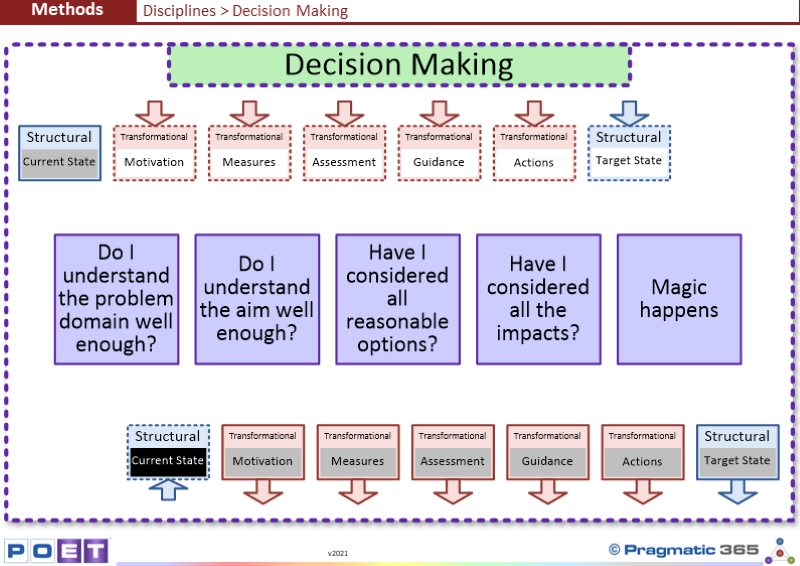https://pragmatic365.org/display-show.asp?Showname=BOOKF-EATools&ComponentNo=000799
Is this a formal governed discipline or just something done as a casual activity?
Does your Enterprise even recognise this as a discipline?
How does this discipline map to your Enterprise?
Are there any problems with how your Enterprise executes this discipline?
Does the discipline your Enterprise uses include all of these required inputs and outputs?
If not, what do you need to change? Who is Responsible for making them? And who is Accountable for making sure the changes are made?
Does your Enterpise train people in this discipline?
If not, do you think it would be beneficial to do so? If so, who will you talk to, to make it happen?
https://pragmatic365.org/display-show.asp?Showname=BOOKF-EATools&ComponentNo=000799
FREE EA Training at www.PEAF.com/Training
FREE EA Books at www.PEAF.com/Books
#PEAF #PragmaticEA #EntArch #enterprisearchitecture #BizArch #Change #Innovation #BusinessModel #CEO #Strategy #TOGAF #ITgovernance #agileculture #agile #agileleadership #agilemethodology #itstrategy #ceos
Decision Making is at the core of everything that is done.
https://pragmatic365.org/display-show.asp?Showname=BOOKF-EATools&ComponentNo=000799

Decision making is the bedrock of everything that happens
within the Transformation Capability of all Enterprises. Hundreds of decisions
are made every day, thousands a month and probably millions per year. Each
decision has the power to have a positive impact, but also has the power to
make a negative impact. Decisions made in the higher up Phases (Strategising,
Roadmapping, Solutioning) are likely to have more impact (positive or negative)
than decisions made in the lower phases (Elaboration, Constructing,
Transitioning). ...to read more, please Login or Register |
Keypoint |
Adopt this component by... |
Decision Making is at the core of everything that is done.
|
Management: Ensure that Decision Making exists and is treated as a discipline.
|
Questions to ponder... |
Is this a formal governed discipline or just something done as a casual activity? |
Does your Enterprise even recognise this as a discipline? |
How does this discipline map to your Enterprise? |
Are there any problems with how your Enterprise executes this discipline? |
Does the discipline your Enterprise uses include all of these required inputs and outputs? |
If not, what do you need to change? Who is Responsible for making them? And who is Accountable for making sure the changes are made? |
Does your Enterpise train people in this discipline? |
If not, do you think it would be beneficial to do so? If so, who will you talk to, to make it happen? |